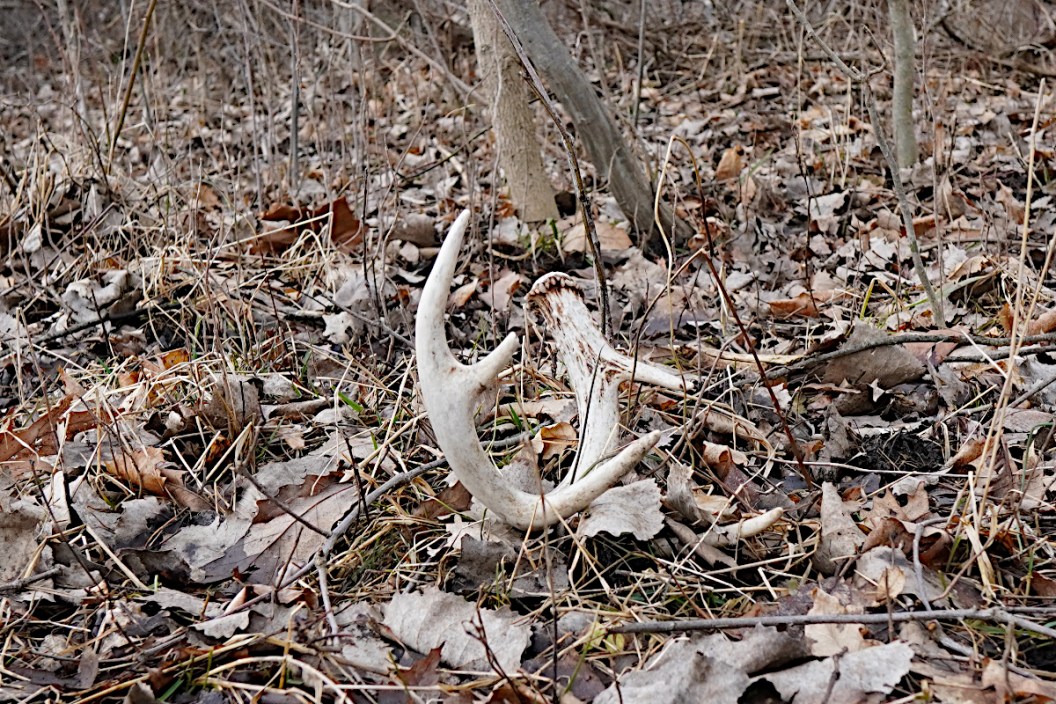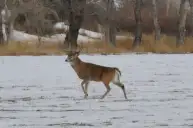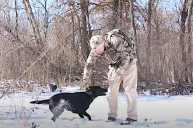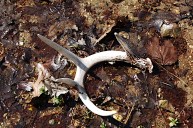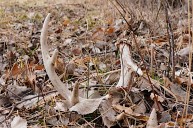Here's how to approach the quest of finding the match to that shed antler.
It was a shed antler I nearly walked past.
I'd been walking for hours already without success. The deer sign was there, but the shed antlers were proving to be extremely elusive. I had quickened my pace a bit in anticipation of wrapping things up for the day when I spotted the four-point side sitting in some grass on the edge of the woods. Not a monster antler by any means, but one any hunter would be happy picking up in the spring.
I continued following the path and less than 50 yards later, I spotted another antler sitting on the edge of the woods. This time it was a nice five-point side. I didn't have to pick it up to know I'd just matched up both sides from a nice 100-inch buck. Less than ten minutes had passed between the two finds.
If only they were all that easy, right? As most experienced shed hunters know, that's rarely the case. Unless you get lucky and find a pair that dropped side by side, odds are your work is going to be cut out for you if you try to find the match.
In fact, in 25 years of shed hunting, I've only found one set that was laying side by side next to each other. I thought I'd examine the best way to search if you want to match up that big antler you just found, and ideally you get the same good fortune I received.
Take a Good Look
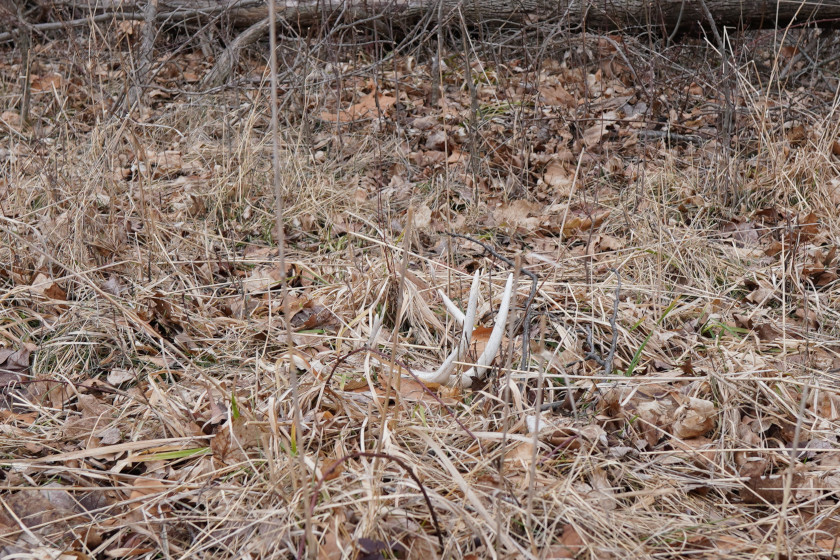
Travis Smola
Many hunters get excited, and some will practically sprint up to any antler they find because they just can't wait to get their hands on it. I know the feeling, but it's best not to rush. Instead, once you've located a side, stop and survey the area nearby. Sometimes, the match will be obvious within 50 to 100 feet, but less visible, even if you're standing on top of the antler. Just this past weekend in fact, I found another matched set in standing water. Just the tips of the tines were sticking out of the water and yet I didn't spot the match laying five feet away until I'd picked up the first one I spotted! That's how well they can sometimes be hidden.
Admittedly, finding two sides side by side does not happen as often as we'd like, but if the match isn't nearby, take a moment to survey the situation. Try to figure out what the deer was doing when it dropped the antler.
With extremely fresh antler finds, sometimes you can get lucky and see tracks that will give you a better clue as to the deer's direction of travel. If you've got a situation like that, you can literally follow the deer forward and then later backtrack its movements if you don't find it in the immediate vicinity. If you think you're walking too slow, odds are you're not walking slow enough.
Then, think about the nearest food plots and bedding areas and the route the deer may take to get to them. Those are the spots to search next.
Whatever the antler find does to your brain, there's really no reason to run over and pick it up right away. You never know what you might learn from observing the scene, particularly true if you find an antler in a place you had not expected to find one. Use your powers of observation to learn as much as you can about what the deer was doing when it dropped.
Grid It Out
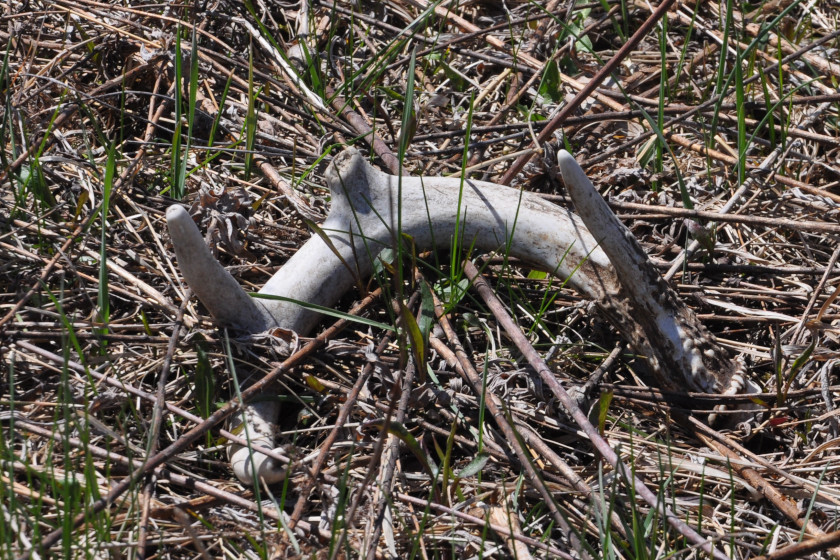
Travis Smola
If you do not find the match in the immediate vicinity of the first antler, the best thing to do next is to establish a grid-based plan. Even with large antlers, a shed hunter needs to be extremely methodical and thorough in their search if they hope to find the missing match. Out of all the matched sets I've found, only three in my 25-year shed hunting career didn't make me work for it.
That usually means you need to carefully grid search every square inch of ground for hundreds of yards if you want to give it a serious effort. I won't lie, it can be time consuming, but this is how the most seasoned shed hunters locate matches.
Remember, it doesn't matter how much experience you have, you're likely to walk past a shed at some point. In fact, I can guarantee that you already have. I know because I've done it myself many times.
I have a few matches I only located on a second or even a third pass of a mostly-open grassy field. It's simply amazing how an antler can vanish into the natural grasses or leaf litter. Don't assume the match isn't close just because you don't immediately find it.
Use Trail Cameras to Help
This only works in areas where you're allowed to run trail cameras, but they can be as vital a tool for shed hunting. They're going to clue you in to the areas where bucks are hanging out.
You can also find out if a buck is still holding onto the match of that shed you just found. If that's the case, it may be best to back out of the area and wait another week or two to give him a chance to shake the other one off. Getting a photo of your target buck missing one side far away from where you found it can also give you clues of where to search next.
Use game camera photos and video to determine where the buck went and then concentrate your efforts there.
Think Outside the Box (and Radius)
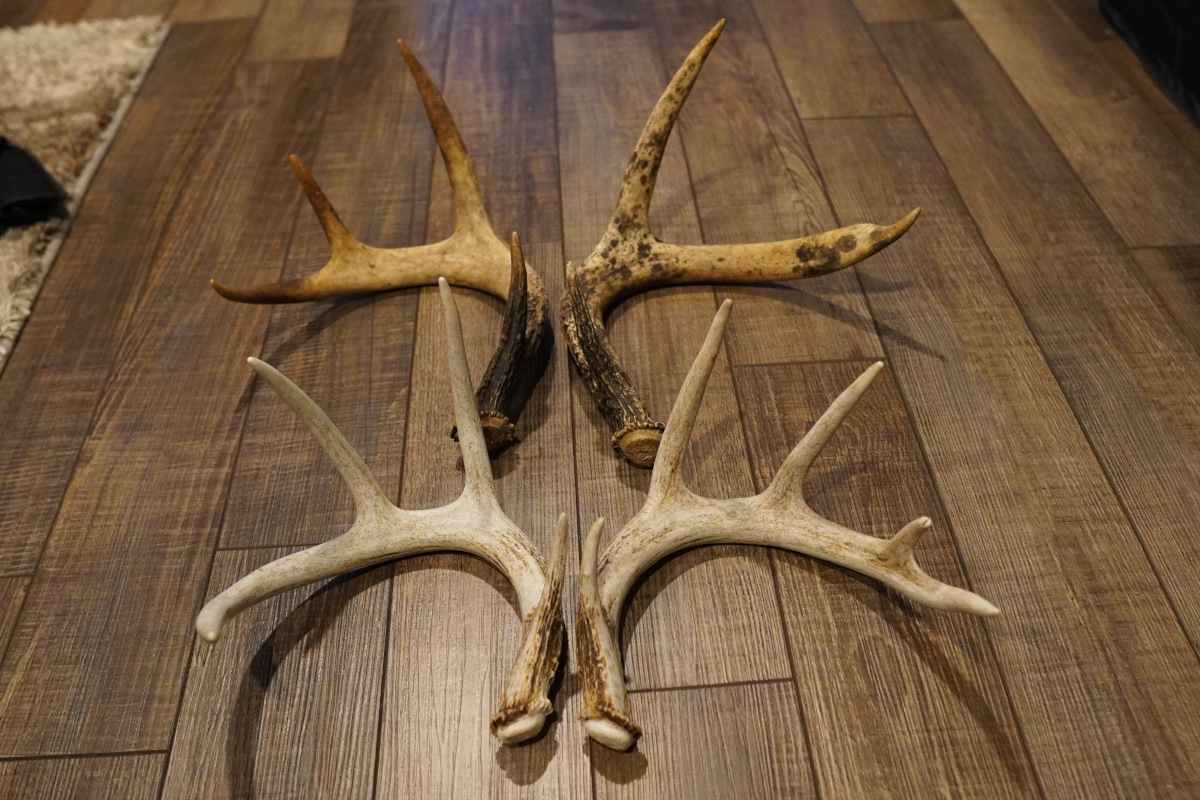
Travis Smola
There is no rhyme or reason as to how bucks shed their right and left antlers. One year they might drop both sides right next to one another. The next they may wander for miles before they lose the second side. If there's one thing I've learned from years of shed hunting, it's that it's best to slowly expand your search radius from the first antler you found. Don't be afraid to open that radius out to a mile or more. You'd be surprised how far apart some deer drop their antlers.
If you've expanded that radius as far as you can go and you still cannot find the match, it's time to stop going with your gut and to start searching every available spot, even those with sparse deer sign. Check the small wood lots and creek bottoms that don't look like they offer much cover. Venture closer to the roads, homes, and even businesses if need be. You might be surprised to find where a deer wandered in the late winter months looking for food, especially if the snows were extremely heavy.
The big thing I've learned over the years is that if I haven't found the match yet, that doesn't mean it isn't there. It simply may be hiding in a place you'd never expect to find an antler.
Remember, the bucks aren't going to be in the same places you saw them during the hunting season. Their behaviors have likely adjusted to the conditions. As a result, so should a hunter's pre-conceived notions about a buck's behavior, no matter how well you think you may know them.
The last piece of advice I have may sound cliché, but it's to not give up. Seldom can shed hunters match up both sides without putting a ton of work in to find them.
That may mean burning a lot of boot leather in the spring months. It might mean spending every weekend in the woods walking. That's how most successful shed hunters find so many antlers, by putting in more time and miles than anyone else. It may be rough when you've walked 20 to 30 miles with nothing to show for it, but it makes those times when you do match up a set all the more satisfying.
For more outdoor content from Travis Smola, be sure to follow him on Twitter and Instagram For original videos, check out his Geocaching and Outdoors with Travis YouTube channels.
READ MORE: THE AXIS DEER AND HOW THEY'RE IMPACTING PARTS OF THE UNITED STATES
